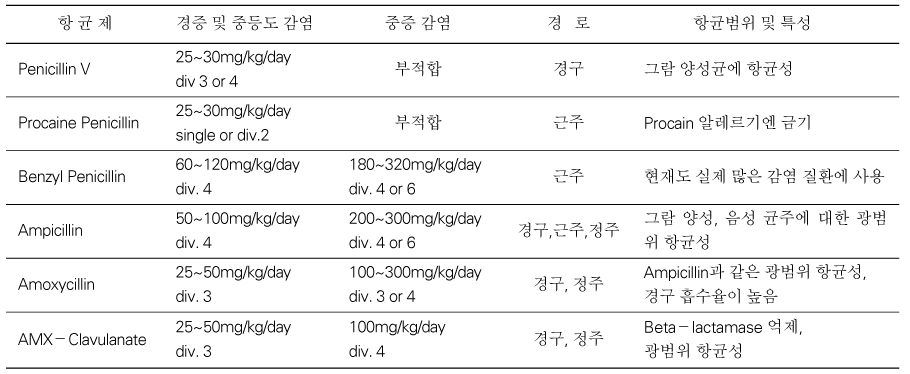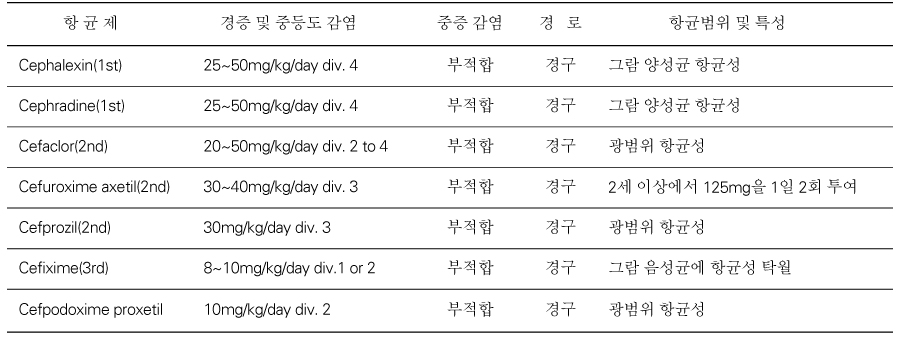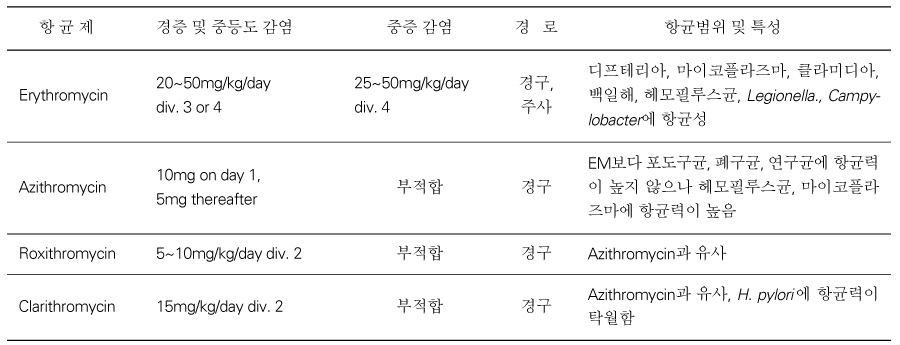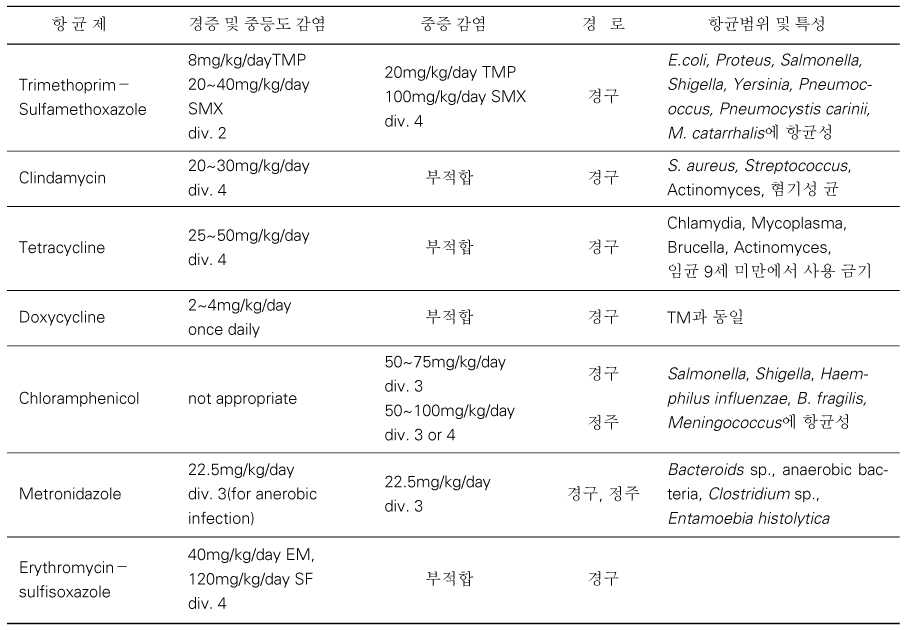 |
 |
- Search
| J Korean Med Assoc > Volume 47(11); 2004 > Article |
Abstract
It has become apparent that infants and children are not small adults. Usually, they suffer from a different array of infectious diseases. The disposition of antimicrobial agents in their bodies is different and is often their response to drug therapy. And, there are substantial differences in these variables even among pediatric age groups. The intelligent use of antimicrobial agents in children requires more than simple extrapolation of observations made in adults. So, we need a very intensive research effort into the pharmacodynamic and kinetic and response to antimicrobial drugs in the pediatric patients. Also, the frequent empirical antibiotic use has led to increased resistance to certain antimicrobial groups. Appropriate prescription of antibiotics in primary care is influenced by several factors in the antibiotic use by general practitioners. An empirical prescription guideline based on the pharmacoepidemiology of resistance, recommending the use of potent and effective antibiotics that are less influenced by resistance to the marker, may help counter the spread of resistance in the community.
References
1. Shella MH, Hicky & George H, McCracken Jr. In: Feigin RD, Cherry JD, editor. Antimicrobial therapeutic agents. Textbook of Pediatric Infectious Diseases 1998;4th ed. Philadelphia: WB Saunders Co.. 2614-2660.
2. Wise R, Andrews JM. Local surveillance of antimicrobial resistance. Lancet 1988;352:657.
3. Finch R. Bacterial resistance--the clinical challenge. Clin Microbiol Infect 2002;8:Suppl 3. 21-32.
4. David IE, Richard M. A practical approach to pediatric infections: Antimicrobial agents, incorporating tables of doses of common antimicrobial agents 1996;Edinburgh: Churchill Livingstone. 629-639.
5. John DN. Pocket book of pediatric antimicrobial therapy 1997;12th ed. Baltimore: Williams & Wilkins. 8-43.
6. John GB. Pocket book of infectious disease therapy 1997;8th ed. Baltimore: Williams & Wilkins. 61-77.
7. Ramaswamy K, Jacobson K. Infectious diarrhea in children. Gastroenterol Clin North Am 2001;30:611-624.
8. Oldfield EC 3rd, Wallace MR. The role of antibiotics in the treatment of infectious diarrhea. Gastroenterol Clin North Am 2001;30:817-836.
9. Hoberman A, Paradise JL. Acute otitis media:diagnosis and management in the year 2000. Pediatr Ann 2000;29:609-620.
10. Hoberman A, Marchant CD, Kaplan SL, Fiedman S. Treatment of acute otitis media consensus recommendations. Clinical Pediatrics 2002;July/August. 373-390.
11. Green SM, Rothrock SG. Single-dose intraqmuscular ceftriaxone for acute otitis media in children. Pediatrics 1993;91:23-30.
12. Nash D, Wald E. Sinusitis. Pediatr Rev 2001;22:111-117.
13. Conrad DA, Jenson HB. Management of acute bacterial rhinosinusitis. Curr Opin Pediatr 2002;14:86-90.
14. Jacobs RF. Judicious use of antibiotics for pediatric respiratory infections. Pediatr Infect Dis J 2000;19:938-943.
15. Hayes CS, Williamson H. Management of group A beta hemolytic streptococcal pharyngitis. Am Fam Physician 2001;63:1557-1564.
- TOOLS
-
METRICS

-
- 0 Crossref
- Scopus
- 1,342 View
- 3 Download
-
Related articles in
J Korean Med Assoc -
Medical treatment of pediatric obesity2024 May;67(5)
Endoscopic treatment for early gastric cancer2022 May;65(5)
Device treatment of heart failure2022 January;65(1)
Practical Exercise Prescription for Primary Care1998 July;41(7)
Medical Treatment in Chronic Congestive Heart Failure1999 August;42(8)










